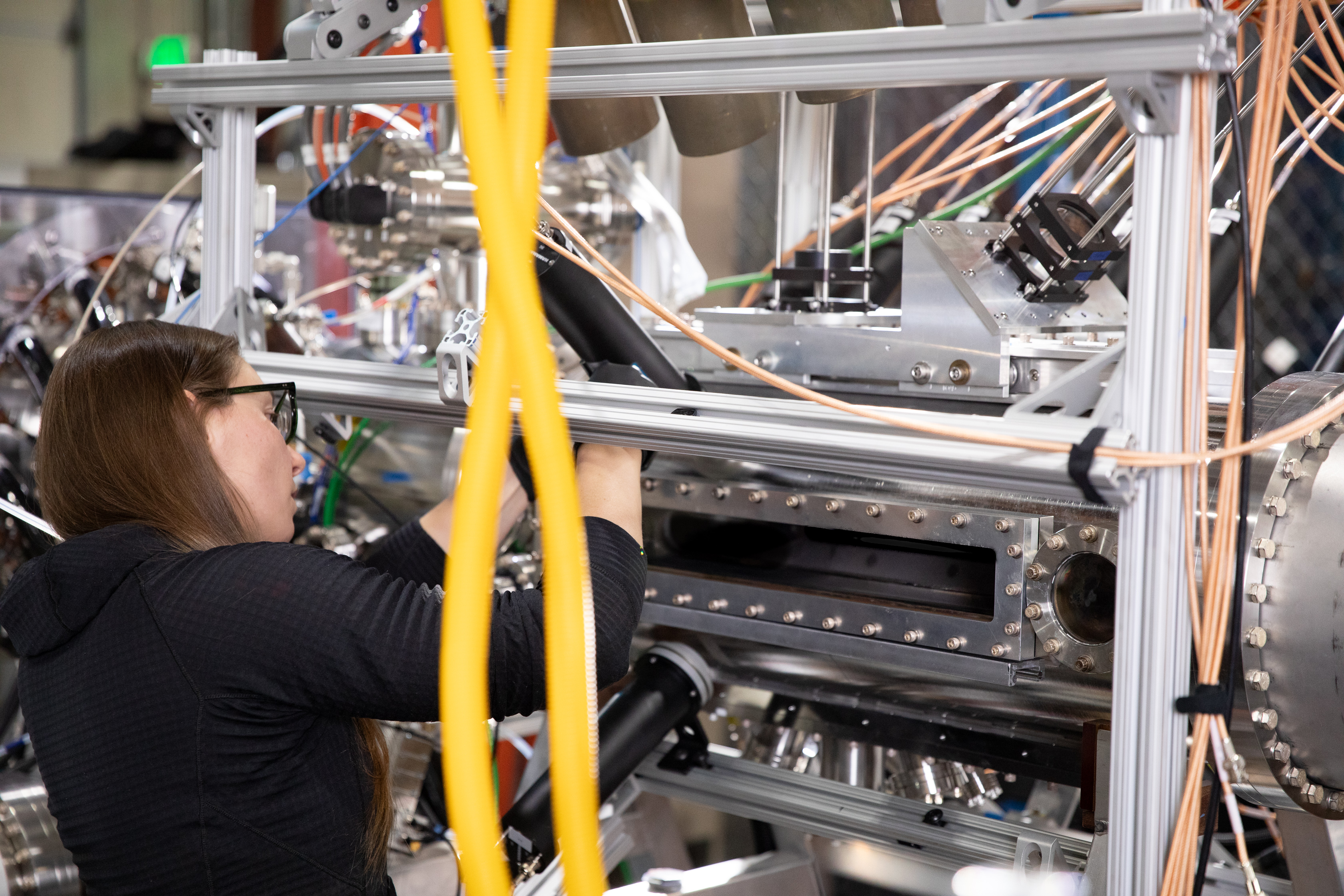
Zap Energy Achieves Significant Fusion Energy Milestone: Electron Temperature Exceeding 10 Million Degrees
Zap Energy and their collaborators at Lawrence Livermore National Laboratory, Los Alamos National Laboratory, University of California, San Diego, and University of Washington published a peer-reviewed article in Physical Review Letters this month demonstrating electron temperature greater than 10 million degrees (approximately 1 keV, the unit of temperature favored by fusion scientists) in a sheared-flow-stabilized Z pinch. Electron temperatures up to 3 keV were reported. This result is a major physics milestone for Zap Energy and for the broader fusion energy research community. Although achieving roughly 10-keV ion temperature is what matters directly for enabling appreciable amounts of deuterium-tritium fusion, the 1-keV threshold in electron temperature is a significant milestone in the development of any fusion concept because heating electrons to such a high temperature requires that major instabilities and cooling mechanisms have been controlled. These characteristics are necessary for any fusion energy concept, and therefore the 1-keV electron-temperature threshold can be regarded as a dividing line between “concept exploration” and readiness for “concept development” as measured by the Lawson criterion.

Due to the inherent physics and engineering challenges, it took over 15 years after initiation in the early 1950s of major controlled-fusion research efforts around the world before 1-keV electron temperature was first achieved. In 1968, Russian physicists announced 1-keV electron temperature on the T3 tokamak, a result initially met with skepticism around the world but confirmed in early 1969 by a travelling team of physicists from the United Kingdom who used a then new technique called Thomson scattering (a technique also used by Zap, more below). This early work on the tokamak concept and the confirmatory measurement of electron temperature set in motion the tremendous worldwide interest in the tokamak concept, which continues to this day.

We note that only six fusion concepts have peer-reviewed published data showing electron temperature exceeding 1 keV before this achievement: the tokamak (including spherical tokamak), laser inertial confinement fusion (laser ICF), mirror, reversed field pinch, magnetized liner inertial fusion (MagLIF), and stellarator. Published FRC data is close, so we’ll call it seven. This publication brings this number to eight, and importantly, in a Z-pinch concept that may offer economic benefits due to its relative simplicity owing to its linear geometry. We also emphasize that while 1-keV electron temperature is an important milestone, there is still significant work remaining in the sheared-flow-stabilized Z-pinch “concept development” phase to achieve further milestones (e.g., scientific breakeven) on their path to commercial fusion energy.
This result is also a major success story for ARPA-E. Building on earlier scientific studies of sheared-flow stabilization of a Z pinch supported by DOE Fusion Energy Sciences, the University of Washington pursued initial performance scale-up of the concept in the ARPA-E ALPHA program beginning in 2015. From this seed, Zap Energy was spun off, and further performance improvements were funded in the ARPA-E OPEN 2018 program and the BETHE program starting in 2020, before Zap raised over $200M of private capital. Additionally, ARPA-E funded a Thomson-scattering diagnostic capability team from Lawrence Livermore National Laboratoryand a neutron diagnostic capability team from Los Alamos National Laboratory. These two teams’ travelling diagnostic capabilities provided independent and consistent measurements, which confirmed the achievement of 1-keV electron temperature.

The sheared-flow-stabilized Z pinch joins the handful of fusion concepts that have exceeded 1-keV electron temperature. This is a tremendous return on the $14M over eight years invested by ARPA-E in this concept and even the entire investment of $133M that ARPA-E has made into fusion energy since 2015 when placed in the context of the other fusion concepts that have reached this milestone. We look forward to further successes both from Zap Energy and from the many other promising ARPA-E funded teams pursuing fusion energy.
